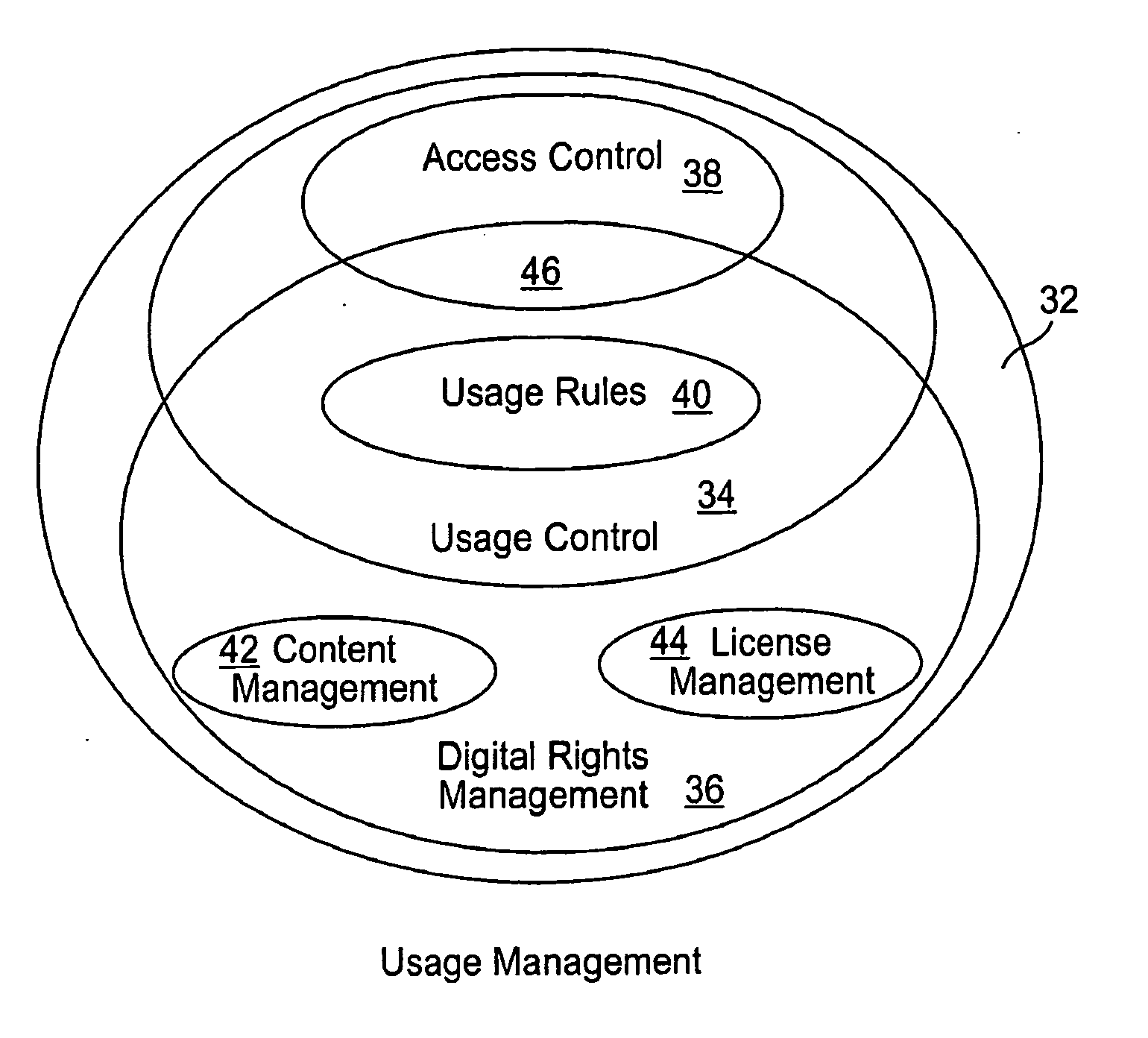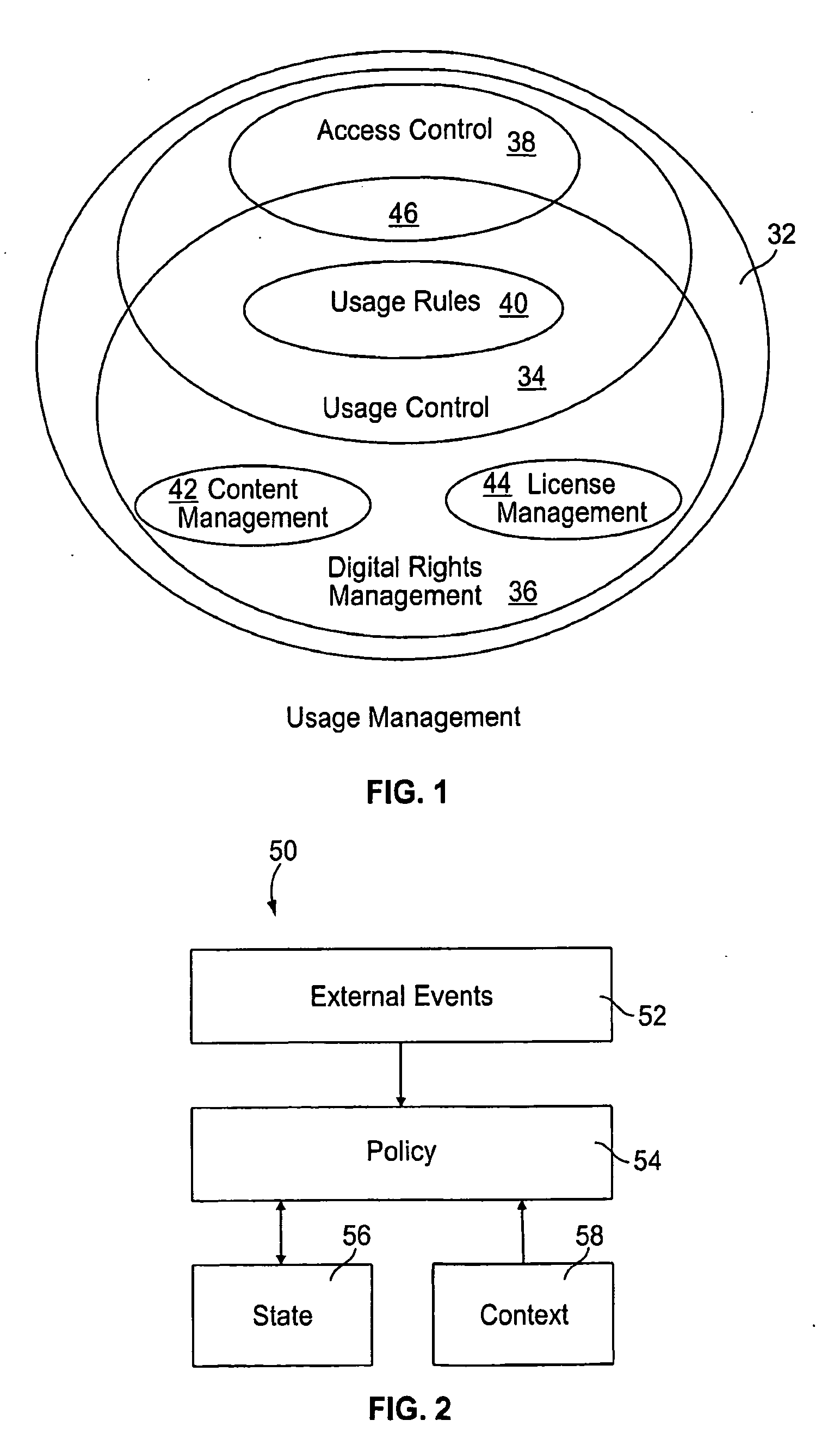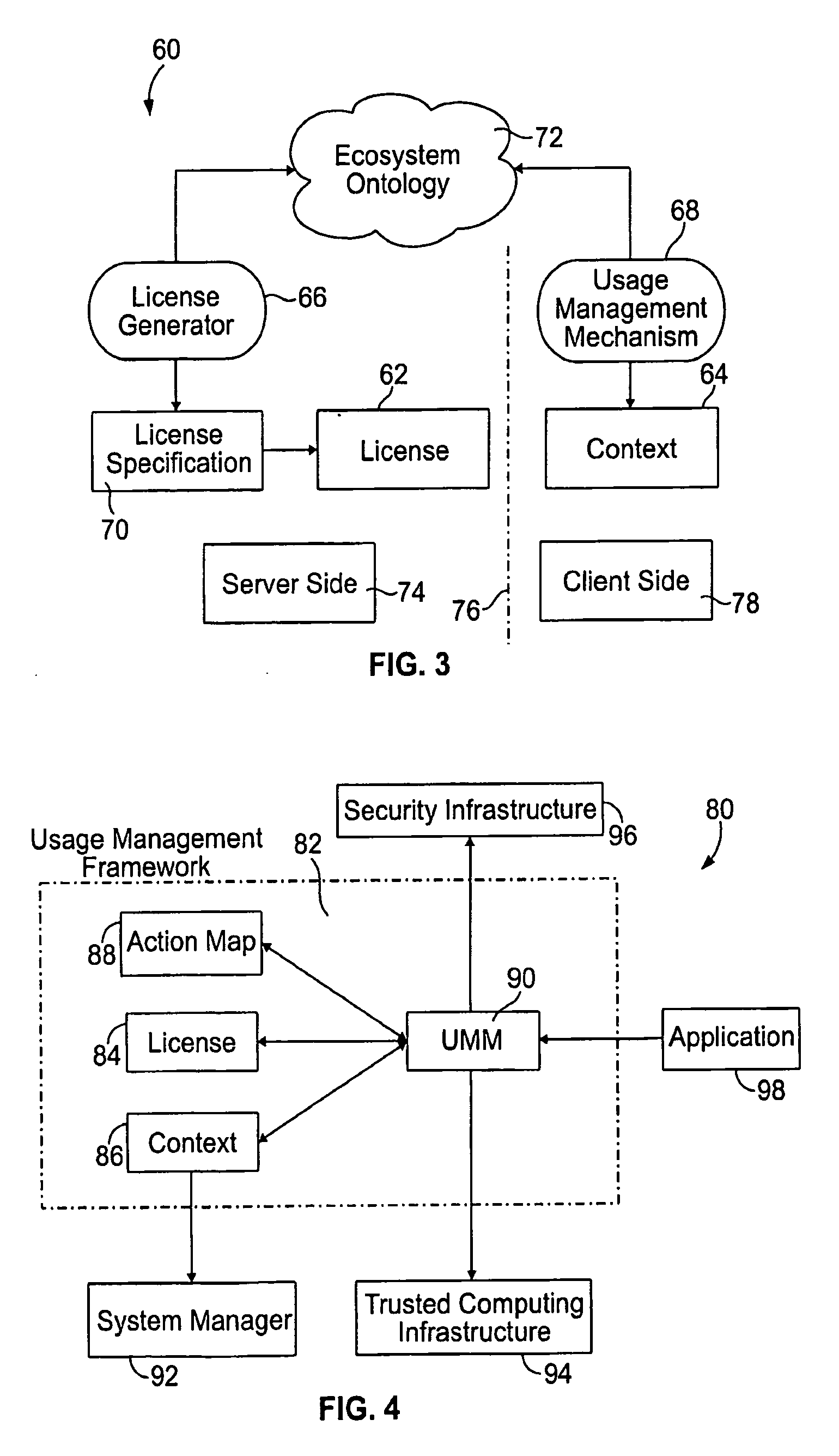However, with the increased use of Web 2.0 applications on
the Internet, these restrictions no longer hold.
This has led to problems, where resource owners demand that they hold the right to express the resource usage policy, rather than the owners of the computing environments.
Such advancements, even though useful in closed systems, fail to address the problem of an interoperability challenge posed by open environments.
Such translations are often infeasible, and difficult to carry out for most of the policy languages.
Such approaches require
standardization of the complete policy language, which stifles innovation and flexibility.
The most well-known, but unsuccessful, approaches to address this problem are IBM's® Cryptolope and Microsoft's®
Palladium technologies.
However, popular
XML-based RELs are difficult to formalize in their entirety.
There are challenges in implementing usage management systems, and the need for an actionable framework for addressing the challenges.
However, in usage management scenarios where resources move across environments that are not known a priori, such an approach is infeasible.
The
semantics of these
XML-based languages are informal, and there are problems involved in providing formal
semantics for these languages.
Both XrML and ODRL have developed and continue to develop independent of these formal languages, and have not been able to incorporate their expression and reasoning power.
Such a fragmented use of policy languages remains the biggest obstacle to achieving usage management along with unhindered flow of information across highly
distributed computing environments.
The existence of multiple policy languages in such scenarios poses two problems, namely, difficulty supporting multiple languages and lack of interoperability.
Another
disadvantage is that even though a given computing platform may support multiple information ecosystems, each of these information ecosystems still operates in complete isolation from one another.
Since different ecosystems use different policy languages, licenses expressed within one
ecosystem cannot be interpreted in another
ecosystem.
It is, however, extremely difficult to translate policies from one policy language to another.
In addition to the complexity of a
license, it may vary depending on the applications.
Different rights expression and
access control languages have been developed that are able to expresses and reason over some of these semantics, but currently there is no single logic that can capture all of these semantics.
While there are many
access control and rights expression languages with varying capabilities, using these languages in different applications presents the problem of interoperability.
Other issues arise with respect to mashups.
However, a number of problems are also emerging with respect to managing the rights associated with the constituent parts of a
mashup, along with the rights that should be assigned to the resulting
mashup service itself.
Recently, a number of difficult issues have arisen regarding how the data associated with mashups can be used.
For instance, because mashups generally involve the combination of someone else's data in order to create a new source of information, a number of ownership and
copying issues occur.
In addition, there are a number of more obscure issues that arise in mashups.
Mashups may also present problems related to privacy.
Because any addressable resource can be included in a
mashup, anyone that maintains a website that can be accessed by the general public is at risk to the problems described above.
Many of the above issues deal with how the data associated with mashups can be used.
This problem arises from the browser security model that is used in typical mashups, allowing the scripts associated with a mashup source to change the data that was supplied by other mashup sources.
It can be seen that the mashup
scenario lacks one of the fundamental properties associated with
digital rights management, namely
machine actionability.
Furthermore, this problem is difficult to address, as it cannot be solved by simply adopting a rights expression language for a given source.
Thus, all sources cannot be expected to adopt a single
REL.
Another problem relates to where rights should be managed within the mashup framework.
This approach is fundamentally flawed, as the rights and usage terms should flow from the original sources, as the owners of these sources should have every right to assert them.
However, as the number of sources and the level of
mashing increase, the complexity of computation associated with determining the unified set of rights associated with the target grows in a manner that is likely to be exponential.
Furthermore, for a typical set of usage terms, it immediately becomes apparent that it is difficult to simply reason over the combined set of rights.
Thus, even for a mashup involving a relatively small number of sources, simply determining whether or not the
license terms of two or more providers conflict with one another is an extremely difficult task.
Moreover, the terms themselves can be complicated.
Understanding the meanings of these usage terms, along with their context and how they might be combined, is a challenge in and of itself.
 Login to View More
Login to View More  Login to View More
Login to View More 


